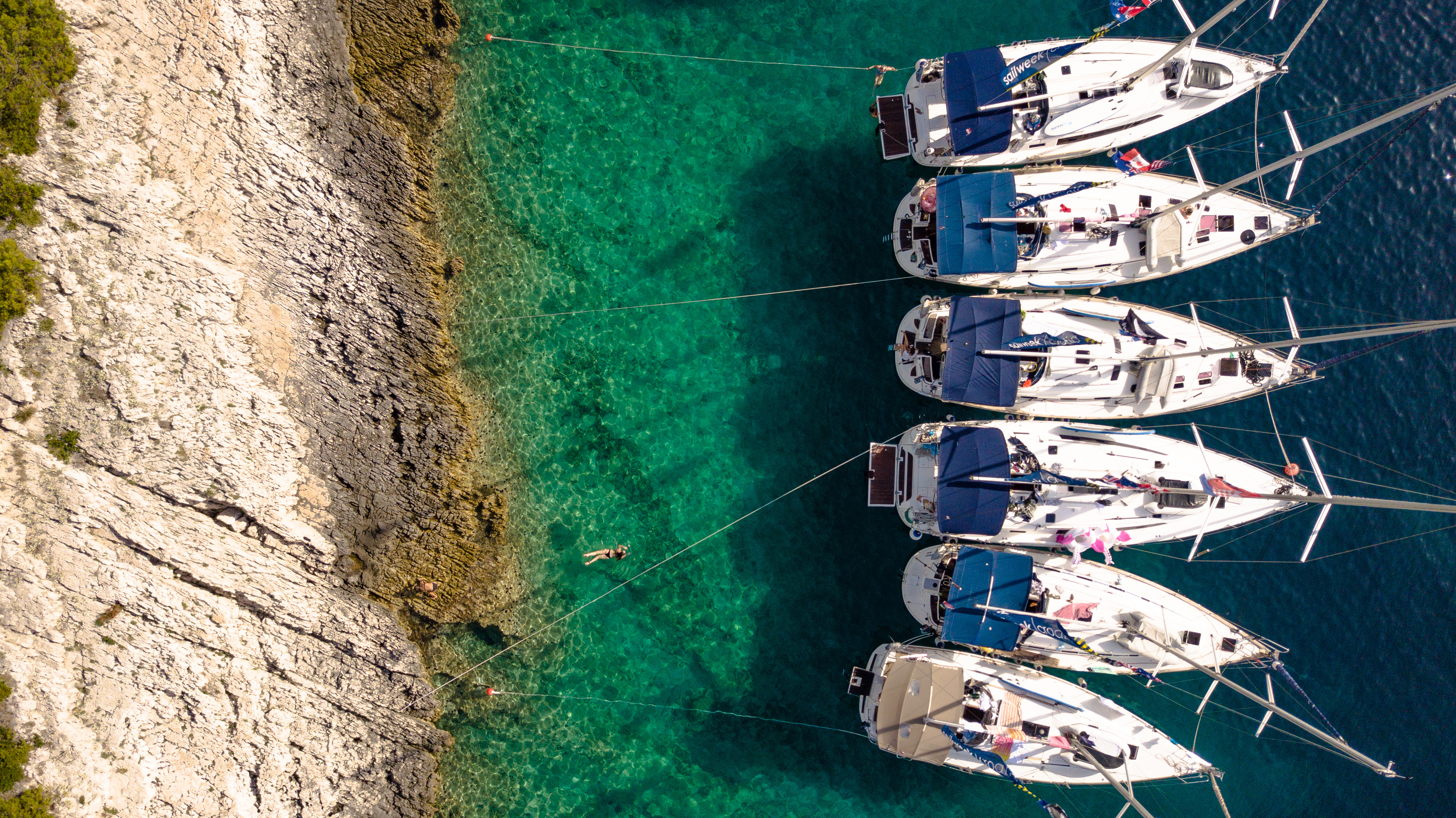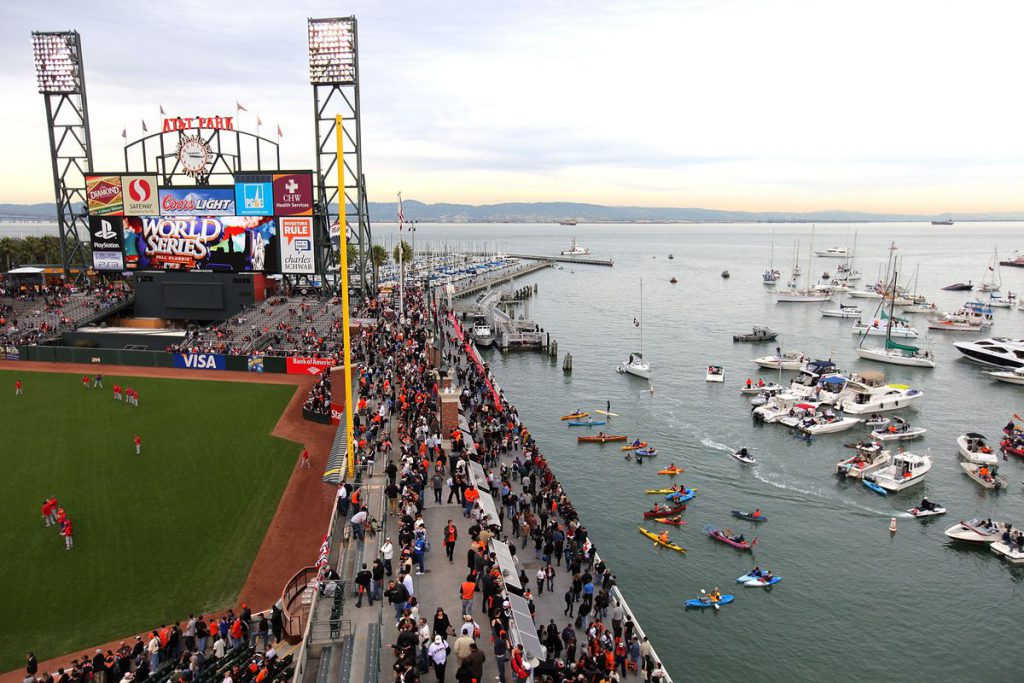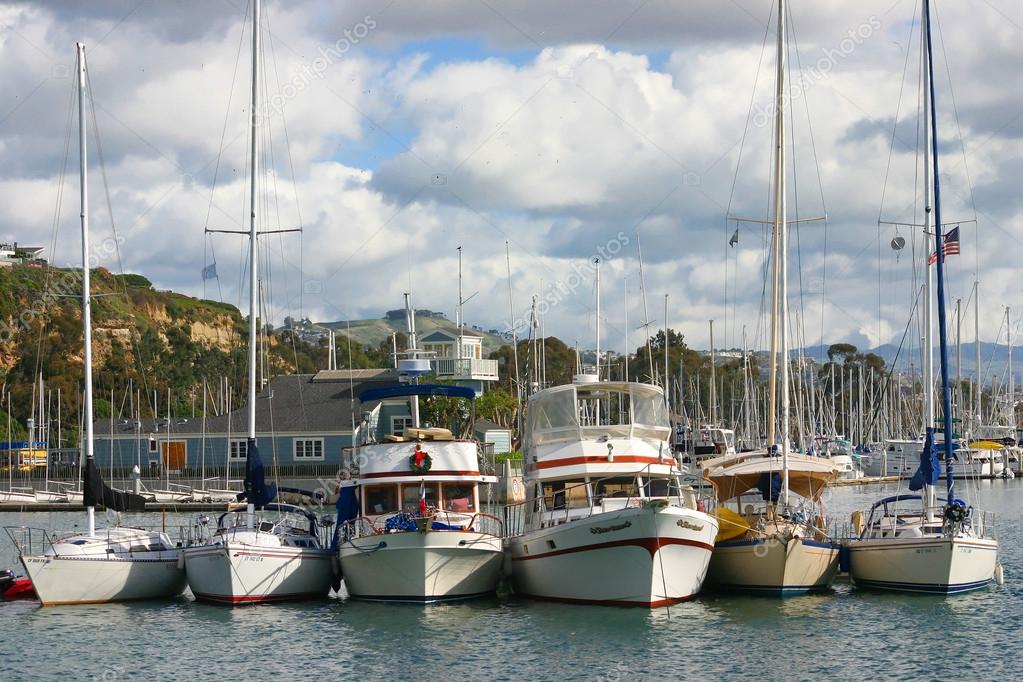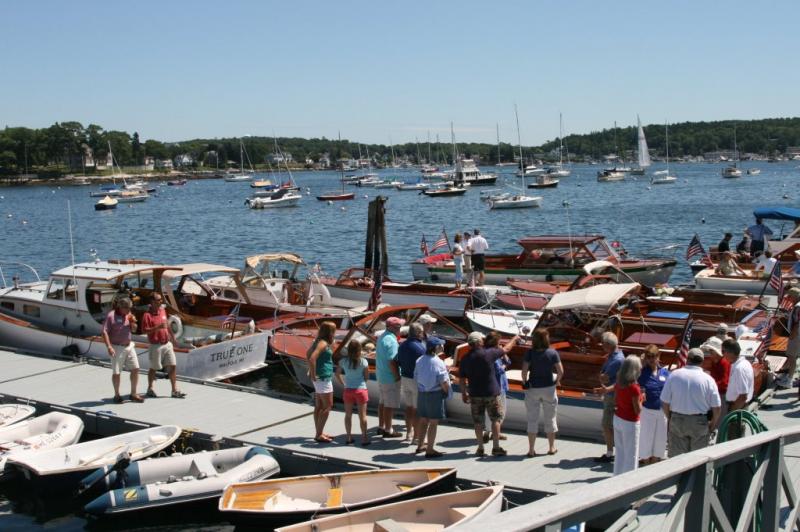Rafting Up, Because the More the Merrier
July 2nd, 2021 by team

by B.J. Porter (Contributing Editor)
Over the years, we’ve spent more than a few days and nights rafted to other boats. Sometimes it’s voluntary – when we meet up with friends we want to spend time with, for example. Other times it’s not; some marinas have limited space and rafting may be mandatory on slips or moorings to fit more boats in.
Whether you choose it or they choose it for you, safe rafting to another boat is a handy skill. If you do it right, it can be safe, fun, and comfortable.
Rafting Basics – Anchored or Moored

The basic concept behind a raft of three to five boats tied side-to-side isn’t complex. Rafting at a dock is even easier than rafting at a mooring.
- The center boat anchors or ties to the mooring. Leave lots of scope if anchoring, and double tie on a mooring.
- Additional boats tie up to the first boat (not the mooring) until the rafting is finished.
Of course, the devil is always in the details. How you tie up is critical, as is how you line up the boats and which boat you choose for the center. And you need to watch the weather, always.
The Center Boat

The largest boat with the best ground tackle should be the center of the raft. If boats are similar in size, the heaviest boat is a better choice for the center, unless a lighter boat has substantially better ground tackle.
The center boat should have her fenders out before anyone approaches. If you expect boats on both sides, then the fenders should be equally distributed unless there’s a size disparity between the neighbor boats. It’s also good to have cleats clear of lines for tying on easily. Have extra lines available, but leave them off the cleats until you know you need them.
Approaching boats should also have their fenders out at the start, but be prepared to adjust them when it’s clear how the boats will settle against each other.
As a general rule, only one boat should be anchored. Multiple anchors will tangle if the raft shifts or swings, so you want to avoid this. Unless you are doing a more complex raft which will be anchored so it doesn’t swing in the wind or you’re parking somewhere where you can not swing (like in a river with strong current), avoid multiple anchors.
For a similar reason, rafting boats on a mooring should tie to the center boat, not to the mooring. You don’t want those mooring lines to get tangled and twisted under load when it’s time to leave the raft.
Tying Boats On
Four lines are needed from the outside boat to the inside boat – at the boat and stern, and two springs. The springs are crucial, a line run from the bow back and the stern forward will keep the boats from moving in the raft.
Set the bow and stern lines first to get the boats connected, but don’t make them tight. Once those are on, set the springs and adjust the positions of the boats fore and aft. Check fender positions to make sure none have ridden up and all are in place to do something if needed, then tighten all the lines.
You want the lines tight enough so there is no real slack and the boats can’t move around.
Offset the Masts
When rafting sailboats it is important to offset the rigs so they aren’t lined up together. If you get a big wake or wave and the boats rock, if they are in line they may get entangled. This would be bad, so set your springs to stagger the masts so they can not touch if the boats get rocked.
Tie TO the inside boat, not FROM it.
As much as possible, the outside boats should tie to the inside boats and not the other way around. The most important for this is so boats can leave the raft on their own with as little confusion as possible. If all the lines holding them on are their own boat, they can de-raft and float away without even waking anyone on the center boat.
Also, in an emergency or a sudden weather shift the raft is quicker to break up if everyone knows what lines are holding boats together.
Rafting at the Dock

Rafting at a dock in a marina is easier than at anchor because the inboard boat is already fixed in place. The same basic rules apply:
- Offset the rigs on sailboats
- Use lots of fenders and make sure they’re not just dangling ineffectually!
- Use fore and aft springs and bow and stern lines to lock the boats in positions.
- As much as possible, use the outside boat’s lines so it can leave easily.
- Sometimes bow-to-stern rafting is preferred for privacy, since it puts cockpits at opposite ends of the raft.
- If you’re on the outside, ask the preferred route over your neighbor’s boat. And if you’re inside make your preferences clear.
- At a dock, rafting is often to a stranger, so be extra polite and take off your shoes before you cross decks.
Involuntary Rafting
It’s not a great feeling to come back to your boat to see someone has tied up to you when you were gone, but in some places this will happen. If you want to be on a mooring in Oak Bluffs on Martha’s Vineyard you agree to let boats raft on you.
You can take some steps to make this easier. First, take a positive mental attitude about it; you’re agreeing to it by staying there so it just might happen. We’ve met friendly people from involuntary rafting, so it’s not always a bad thing.
- Leave your fenders on where you want them. This makes it easier for incoming boats and you make sure you’ve protected yourself.
- Leave your cleats clear so there are obvious places to tie on. You don’t want someone trying to tie up to a stanchion because your cleats have lines on them.
- If the marina instructs you to raft on someone, tie to them, not the mooring. And use your own fenders, too.

Of course when forced in close quarters with strangers, consideration is another key to keeping the times good. Not everyone keeps your hours, and boats with kids usually like it quiet earlier.
- Posted in Blog, Boating Tips, Cruising, iNavX, Navigation, Reviews, Sailing, Sailing Tips
- No Comments
- Tags: boat events, how to sail, Rafting, Summer boat, summer boating


Leave a Reply